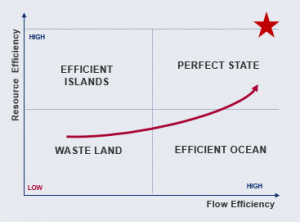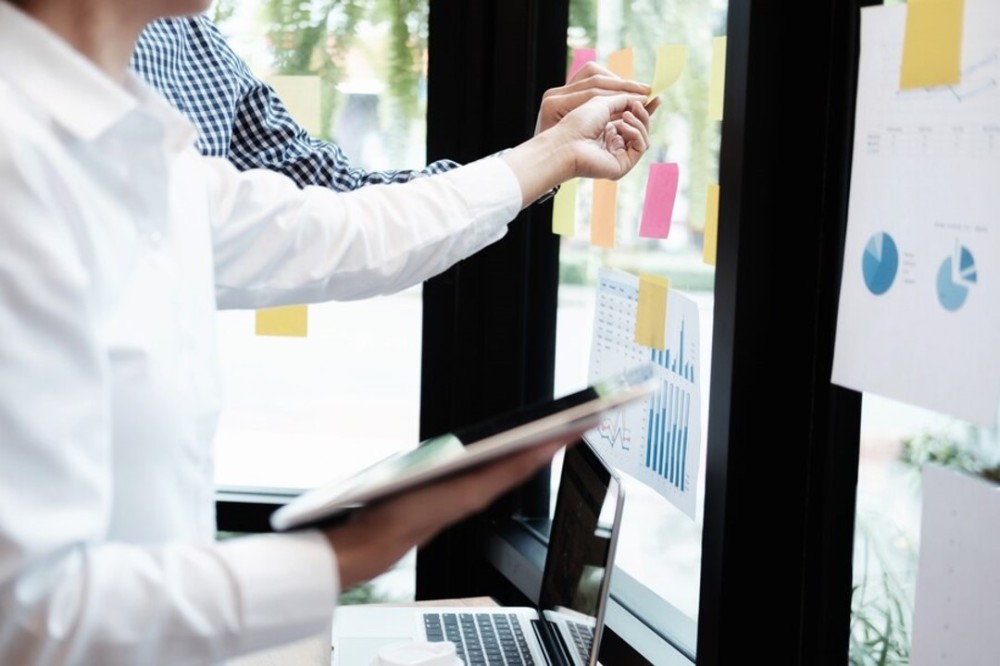KAIZEN™ Foundations are one of the pillars of creating a KAIZEN™ Culture
KAIZEN™ means continuous improvement and is recognized worldwide as a crucial pillar of competitive strategy in organizations. This practice aims to engage everyone in the pursuit of improvement every day in all areas of the organization. Thus, the goal is to install a Culture of Continuous Improvement in the organization by modifying people’s behaviors and beliefs.
For this transformation to happen, all teams, processes, and strategies must be improved, but to perform these improvements, it is first necessary to master the KAIZEN™ Foundations. These are a set of Lean Principles that organizations should understand, and follow thoroughly, to start changing from fixed mindsets to growth ones while increasing their awareness regarding new paradigms.
Understanding the 5 KAIZEN™ Lean Principles
1. Create Customer Value
The first KAIZEN™ principle relates to customer-centricity and is crucial in today’s demanding environment, where customer expectations constantly change, and organizations must adapt accordingly. So, the strategy of any company should be focused on this principle: continuously improve the customer experience by discovering what the client wants, what value is from their perspective, and offering it to them in the best way possible.
Organizations must adopt a supply chain pulled by real-time customer demand to respond to a changing environment.
Yet, it is vital to follow a “market in & quality first” approach, indicating that it is more valuable to deliver product quality and efficacy, even if competitors entering the market do the opposite.
2. Create Flow Efficiency
This principle refers to the importance of flow efficiency, namely the proper movement of materials and information. To achieve the perfect flow of operations, it is first necessary to eliminate Muda – all the activities that do not add value to the process – such as stoppages, waste, and variability. Then, the automation of tasks should be implemented, but it is essential to clarify that automation should not harm the flow but enhance it. So, it should only be included after eliminating waste and creating flow.
3. Be Gemba-oriented
After creating flow efficiency, the focus should be on resource efficiency in Gemba. Gemba is the shopfloor, the place where value is created. This Lean Principle is about having the mindset to go to the shop floor, identify what is value-added and non-value-added, and eliminate every non-value-added activity.
Moreover, creating a “4Ms Basic Stability” system is also part of this principle, reinforcing basic organization conditions. The 4Ms refer to:
- Manpower: Good work habits, necessary skills, punctuality, no absenteeism
- Material: Fewer shortages, more accessibility at point of use
- Machine: No breakdowns, defects, or unplanned stoppages
- Method: Standardized processes, maintenance, and management.
The technical stability tools used in these 4Ms to keep operations in flow and under control are:
- Identification of Value-Added (VA) and Non-Value-Added (NVA)
- Elimination of Muda (Waste)
- Standardization of work
- Adoption of SDCA (Standardize, Do, Check, and Act) and PDCA (plan, do, check and act) cycles
- Improvement of Overall Equipment Efficiency (OEE)
- Application of 5S (Sort, Set in order, Shine, Standardize, and Sustain) methodology for organization
- Adoption of 3C (Concern, Cause, and Countermeasure) for problem-solving
- Use of 7 QC tool histograms: pareto charts, cause and effect diagrams, run charts, scatter diagrams, flow charts, control charts
- Implementation of autonomous maintenance plans
4. Empower and Engage People
Everyone in the organization should be involved in the continuous improvement process, and their individual and team objectives should be aligned with the improvement strategy. To transform people’s mindset into one of lean KAIZEN™ Fundamentals, it is vital to install a problem-solving mindset prepared to identify waste, learn, and implement improvements. An organization should foster an environment of no judgment and no blaming for people to feel engaged and participate in the improvement journey. To reinforce this need for involvement, people should engage in KAIZEN™ Workshops provided by the organization.
5. Create Visual Standards
The last KAIZEN™ principle has to do with the creation of visual standards. It is essential for the organization to understand the importance of standards as it is the best-known way to execute any process.
Organizations must be scientific and transparent when communicating with people by using visual management and data to define standards. Still, SDCA and PDCA are valuable tools that should be used in cycles to improve standardization.
What is the Difference between Flow Efficiency and Resource Efficiency?
Having pointed out all the KAIZEN™ Lean principles, it is crucial to clarify the difference between flow and resource efficiency.
Suppose an organization finds itself in a wasteland of low flow and resource efficiency. In that case, it should adopt flow efficiency first, and only then optimize the resource efficiency to reach the perfect efficiency stage.

So, the priority is to first create flow efficiency by looking at the timeline from customer order to cash collection, and reducing lead time by eliminating non-value-added waste. This results in the best possible customer experience as the maximum value added is in satisfying the customers’ needs. Only then the best possible results in QCD (quality, cost, and delivery) and growth can be obtained.
Flow Efficiency vs. Resource Efficiency: the case of a services company
This company’s real case demonstrates the difference between flow and resource efficiency, stressing the need to prioritize flow efficiency.

The first situation describes the process that happens to a man experiencing intense chest pain. He runs different appointments and exams at different times and, only in the third appointment, after 30 days, has the final diagnosis.
In this situation, the process was designed to be efficient in terms of resources, i.e., the doctor is efficient at the first appointment and sees 20/30 patients per day, and the clinic has a very high occupancy rate. However, much time is spent waiting for a diagnosis, and, as the man is the flow unit, it demonstrates a performance decrease in the process.
In the second situation, this patient can have a complete diagnosis in only 4 hours due to flow efficiency, improving the whole process substantially. Flow efficiency is an integrated experience, reducing lead time and improving the process.
What are the Benefits of having a KAIZEN™ Culture?
With all this in mind, it becomes evident that applying the KAIZEN™ principles generates incremental long-term value in the organization by developing the culture needed to create effective continuous improvement. This culture lies in the engagement of all employees, in changing their mentalities and actively taking part in the organization’s improvement journey. This can be done through the continuous identification of waste and consequent elimination and follow-up of process standards.
Do you still have questions about KAIZEN™ Foundations?
What is Muda?
Muda is an essential term of KAIZEN™ which regards decreasing waste by eliminating overproduction and reducing unnecessary activities. There are seven types of Muda: excess production, people waiting, material (or information) waiting, movement of people, material transportation, overprocessing, errors and defects.
What is Gemba?
Gemba is a Japanese term meaning “the actual place,” referring to where value is created, such as the shop floor in manufacturing. To perform “Gemba Walks” means visiting the shop floor to observe the actual process, understand the work, ask questions, and learn from those who perform the work.
What is flow?
Flow is how work progresses through a system. A good flow means that the system works steadily and predictably well. Every time there is a breakdown in the flow, the chances of accumulating waste increase.
Additionally, there are four types of flow units – products, information, material, and projects – and these might be primary or secondary flow units, depending on whether they transfer value to enable features, requirements, or results or transfer value by emotional experience.
See more on Operations
Find out more about improving this business area
See more on Culture & Organization
Find out more about improving this business area
